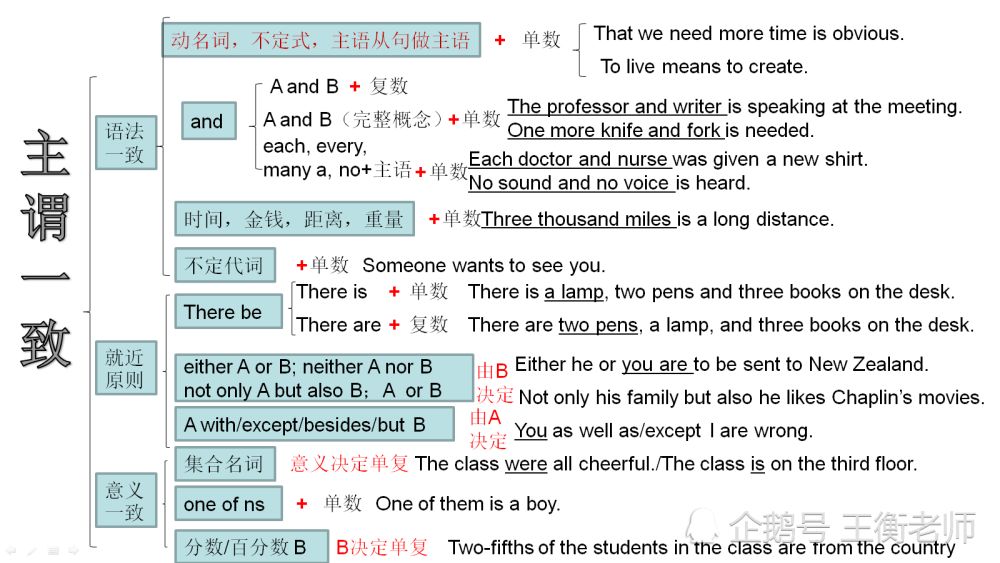| 宜城教育365速发国际靠谱么_365bet亚洲官方网址_预付365商城下载网www.bjtlcd.com 语法形式上的一致

⑴主语是单数形式,谓语动词也用单数形式;主语是复数形式,谓语动词也用复数形式。如:The twin is in. 一个双胞胎在家里。The twins are out. 双胞胎都不在家。
⑵复数名词clothes, glasses, trousers, shoes等做主语中心词时,谓语动词用复数形式。如:My trousers are worn out. 我的裤子才穿破了。
⑶短语“a/the pair (piece, basket …) of”作主语时,谓语动词与“pair, piece, basket…”的数保持一致。如:This piece of paper is too small. 这张纸太小了。Here are two pieces of news.这儿是两则新闻。
⑷不可数名词、动词-ing形式、动词不定式、从句等作主语时,谓语动词常用单数形式。如:Watching TV too much is bad for your health. 看电视太多对你的身体有害处。
⑸(both…)and连接并列主语时,谓语动词常用复数形式。如:Mary and Kate are at school today.玛丽和凯特今天在上学。
⑹and连接的并列单数主语名词前有each, every, no等修饰时,谓语动词用单数形式。如:Each boy and each girl has a new book.每一个男孩和每一个女孩都有一本新书。
⑺and连接的两个单数名词如果指同一人物(and之后的名词前没有冠词),则谓语动词用单数形式。如:The teacher and writer is my father.那个老师兼作家是我爸爸。
⑻主语中心词之后有with, together with, like, but, except等修饰语时,谓语动词的数与前面的中心词保持一致。如:The teacher with his students has gone to the park. 老师带着他的学生去公园了。
⑼-body, -one, -thing, each, every, either, any(任何一个), neither, much, little, a little, a great deal of, more than a/an/one等作主语或修饰主语时,谓语动词用单数形式。如:Each of us has two hands. 我们每个人都有两只手。Many a student has seen the film.许多学生都看过这部电影。
⑽each作同位语时,谓语动词应与主语保持一致。如:We each have been to the Great Wall before. 我们每个人以前都去过长城。
⑾many, few, a few, several, a number of等作主语或修饰主语时,谓语动词用复数形式;the number of虽然接复数可数名词,但它的意思是“……的数目”,所以作主语时,谓语动词要用单数形式。如:There are a number of students on the playground. 操场上有许多学生。The number of teachers in our school is 73.我们学校老师的数量是73。 宜城教育365速发国际靠谱么_365bet亚洲官方网址_预付365商城下载网www.bjtlcd.com |








